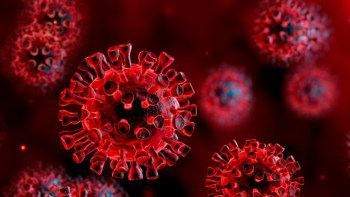The succession of letters containing anthrax sent to US media outlets in the wake of the 11 September 2001 terrorist attacks was a grave warning of the potential impact of biological warfare. Five people died, more than 20 were infected and estimates for the total clean-up bill stretched as high as $1bn.
The main reason for the huge cost was that entire office buildings had to be fumigated with chlorine dioxide. Although this bleach is effective at killing microbes like anthrax, it is also toxic and so in the end must be neutralized. It would seem prudent, therefore, to use sterilizing agents that are harmless to humans. One possibility is ozone (O3) gas which inactivates dangerous microbes by oxidizing their cell structure. Unfortunately, ozone dissolved in water decays quickly into oxygen rendering it useless.
Now, however, scientists in the Republic of Korea have learnt how to extend the lifetime of ozone by making the water acidic. “The acidic ozone water can be produced abundantly from tap water or fresh water at any place on Earth,” explains Han Sup Uhm at Ajou University. “For example, a moderate size of system can produce the acidic ozone water at one or two tons per minute which can be sprayed over the contaminated area.”
Long lasting
In the past scientists have suspected that the reason for ozone’s accelerated decay in water might result from its interaction with OH– ions. Because acid affects the way water dissociates so that there are fewer OH– ions compared with H+ ions, acidifying ozone water should make the ozone last longer. Uhm and colleagues have proved that ozone lasts longer in acidic water and have come up with an analytical expression that predicts how many microbes can be killed with ozone of a certain acidity, or pH (Appl. Phys. Lett. 92 174102).
The researchers found that in neutral water at pH 7, the “decay time” of ozone — the time for half of it to turn into oxygen — was just 23 minutes. However, adding just a small amount of hydrochloric acid to reduce the pH to 4 upped the decay time to three hours.
This extended decay time not only means that there is more time to use ozone water, it means that ozone water can kill more microbes. Their analytical expression predicted that pH 4 ozone water should kill around 25 times more microbes than neutral ozone water. This prediction was backed up with experiments using both kinds of ozone water with bacterial spores.
Uhm says that his team developed the ozone water for use in the defence against biological warfare agents like anthrax, though there could be many other applications. “Acidic ozone water may be applicable to the agriculture, seafood and livestock industries to prevent spoilage and to prolong the shelf life of products,” he says. “It may also prevent or control diseases and pests in agriculture.”



